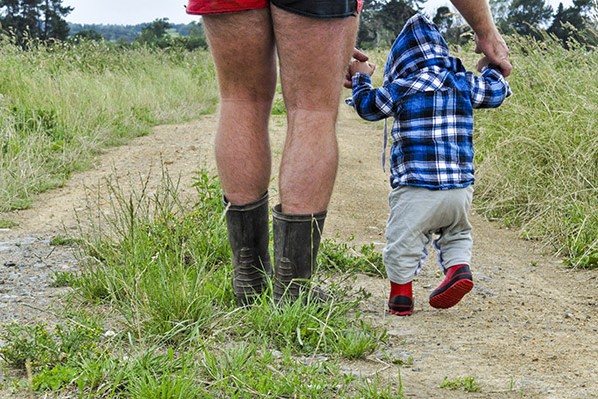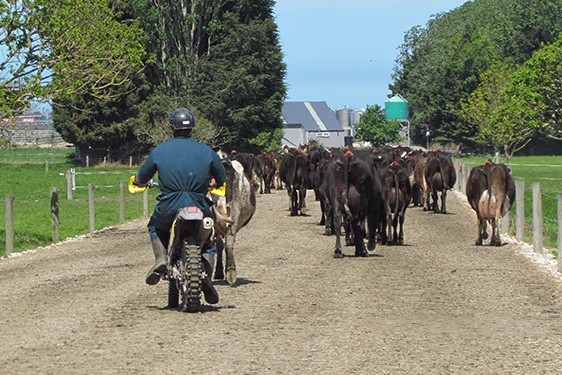New Zealand’s Covid lockdown last year had little effect on farming operations, other than to move a lot of things online. Phil Edmonds reports.
A year on from New Zealand entering Covid-19 Level 4 lockdown it’s timely to reflect on the way we adapted to the ‘black swan’ event, and consider whether any changes made, or new thinking adopted, will have a lasting impact on farm operations.
The release of a research study into farmer experiences of the initial lockdown, undertaken by AgResearch, Lincoln University and Plant & Food NZ among others, has started the evaluation process, and at a high level, tells something many of us already know – farmers are resilient and as a result got on with it, as ever.
This finding was based on farmer survey responses that identified the relative ease with which they kept calm and carried on. Having been granted essential service status, many farmers suffered almost no inconvenience. But there is evidence that subtle but important shifts in behaviour took place, some of which are all for the good (digital communication). At the same time, there is also some sense that the effects on farmers from the country going into lockdown last year have yet to fully emerge (labour shortages).
Supply chain disruptions
Looking at the findings from the report subtitled The immediate impacts of Covid-19 control measures on the agri-food systems of Australia and New Zealand, you could argue there’s nothing to see – farmers across both New Zealand and Australia, by and large, boxed on through the initial lockdowns with little trouble. Agricultural activities except fibre production in both countries were classified as essential services, and for the pastoral sector at least, ensuring social distancing requirements were adhered to only required cursory attention.
The research ultimately found that ‘the impacts of Covid-19 control measures on the agri-food sectors were relatively small’.
But it also suggests that the smooth sailing wasn’t simply due to an ‘as you were’ green light from the government. The underlying and frequently practiced resilience and adaptability in the face of adversity was a critical advantage.
It is also important to note that as much as the Level 4 lockdown last year might have felt like business as usual, there was an element of luck about the timing – at least for some.
Agresearch scientist and co-author of the report Val Snow says: “It could have been a whole lot worse for some industries if the timing had been different. There were examples of workers in viticulture having to act quickly to relocate locations before the lockdown in order to complete harvests.”
There was also no major weather event in New Zealand that required a regional or even national response. Had there been an extended drought or flood, logistical support would have inevitably been a major challenge and had a negative impact on production.
For those in some parts of New Zealand, an autumn drought was being felt at the time, which did generate some knock-on problems for farmers. This related to the availability of animal feed for some livestock farmers. It also meant that farmers were forced to adapt their normal operations, due to restrictions forced on other parts of the supply chain that farmers rely on.
A summary of the impact of the Covid-19 lockdown on different agri sectors in New Zealand noted that for red meat farmers, some were affected by an inability to get sufficient animals off farm resulting from feed shortages. For the dairy sector, some farmers’ normal operations were disrupted due to social distancing required in processing plants slowing down throughput. This led to a reduced ability to cull cows, which in turn had a negative impact on feed supplies.
It was a reminder that farming operations are one piece in the puzzle of delivering food to the mouths that pay for it, and while they were able to go about their business without major change, those up and downstream were in some cases less fortunate.
The research report noted that the wider agricultural sector was exposed to the flow-on effects of movement restrictions and market disruptions. These included ‘reductions in the availability of replacement parts for equipment, difficulties in the distribution of agricultural products through processing facilities and onto final sales locations, and changes in market demand’.
Covid changes on farm
So apart from nothing, what did farmers say changed their world during lockdown?
Some of the respondents to the survey noted that farm visits from rural professionals stopped, which was disconcerting both from a business and social perspective.
Vets, for example, whose work is unavoidably hands-on and interactive, were one group that had to adapt their practices. Although animal welfare was deemed essential, they were required to treat animals without interacting directly with farmers. Inevitably there were concerns that successful outcomes could be reached.
Other rural professionals used novel means of managing social distancing. Snow says one arable farmer who responded to the survey in Australia recounted an instance where they toured their farm to inspect crops in separate vehicles and communicated by walkie talkie.
While most of the interviews that contributed to the research findings focused on problems and short-term fixes, farmers also identified some positive impacts from the forced lockdowns. And this is where the research had added some useful insight.
The report says the lockdowns were found to have generated a newfound awareness and determination to ‘explore new labour-saving technologies, find ways to manage previously ‘unmanageable disruptions’ like short-supply chains of inputs, obtain faster and more reliable internet and telecommunications, and provide mental health networks to enhance the ability of individuals to cope with unprecedented abrupt change’.
Looking at that list, possibly the most obvious immediate positive outcome has been farmers became more accepting of virtual communications, which is likely to have a lasting impact for their businesses and human welfare. As was reported in Dairy Exporter’s February story on technology adoption onfarm, the Covid-19 Level 4 lockdown forced farmers to look at alternative means of communicating, and the availability of Zoom sharpened people’s focus on technology.
One group of rural professionals specifically identified in this report for acting quickly to enable this and adapt to the non-contact demands under Level 4 were fertiliser companies. Some farmer respondents noted these companies had accelerated a move from physical visits to online/paperless transactions.
Ravensdown national services manager Tim Roulston says that finding certainly resonates with his company. “Becoming paperless is a strategy we had been working on for a while, but we accelerated our effort last year. In some ways the Covid-19 crisis presented an opportunity for farmers to take it up.
“With the paperless technology, we were able to reduce farm visits. One of the things that has changed is that rather than require a discussion on soil tests and developing an action plan round the kitchen table, it can be done online or over the phone.”
Farmer uptake of this new way of working has been evident. “We’ve seen significant growth in digital ordering of plans since Covid-19. This is where someone would have previously had a plan on a piece of paper, and had a rep come out through the season. Now they’re able to collaborate online, choose and act on a plan on a map, which can then be sent right through the supply chain system, through the store, to the spreader,” says Roulston.
“During the Covid-19 lockdown and spring, orders made through digital channels peaked at one in every three. A year before that it would have been one in five.”
Labour shortages exacerbated
While also acknowledged above as being a Covid-19 inspired opportunity to grasp, addressing labour shortages through new innovation has not been resolved or turned into a positive yet.
Snow says the issue came through clearly when the interviews were undertaken last year, which focused on the immediate unavailability of migrant labour – both low-skilled and technically specialised.
There was plenty of fear expressed when the border was closed and farm workers were unable to leave or enter the country, although those voices died down when the government moved to create some flexibility for visa holders already in New Zealand.
Typical resilience cited throughout the report came through, and it appears that farmers adapted to the unanticipated labour shortage by working longer hours or calling on local sources of help from those outside of the workforce. However, this was never going to be a sustainable response. “It remains an open question how long some primary industries will be able to cope without migrant labour,” says Snow.
This concern is now growing. The February 2021 edition of Federated Farmers Farm Confidence Survey found 35.8% of respondents reported it has been harder to recruit skilled and motivated staff, an 8-point increase from July 2020.
There will become a point where those overseas workers who remained in New Zealand on extended visas will want to return to their families as they would normally have done in seasonal lows pre-Covid-19.
With no near-term prospect of a return to easy international travel, and uncertainty about how effective vaccines will be at a national level, farmers and growers are now facing a transition to a labour solution that might be flippantly characterised as short-term pain for long-term gain.
In keeping with the report’s findings however, it needs to be said that on balance, the lockdown last year is still likely to have created more opportunities for farm operations to positively evolve than regress. And it has also been made clear that resilience planning is ever important.
“We were lucky,” says Roulston. “But we are also resilient. You can get nervous about overseas markets and how they might react, but the spirit of the rural sector is based on being resilient and adaptable, which we’ve demonstrated. We’re used to climate uncertainty and the emergence of new technology, so we were well placed to face change.”





